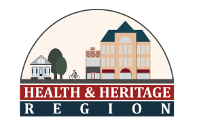Chelsea Schneider, Innovations Content Manager, Aim

It’s been a whirlwind year for the two regions recently designated as the state’s newest Stellar Communities.
This year marks the first time regions were designated for Stellar funds, as opposed to individual communities, after the state re-envisioned the program to focus on collaboration. Members of one of the winning regions, The Health and Heritage Region, sat down with Aim to discuss the benefits of the programs.
The region is comprised of Greenfield, Fortville and Hancock County.
For the 2018 program, the state required Stellar Communities applicants to work collaboratively across regions. How do you feel that change helped the program? And what advice would you give to local officials who are hoping to apply in the future?
The change in the program helped communities share resources of staff, time, and funding for consultants. Many good ideas came to the forefront as we were able to work with a well-experienced group. It also helped strengthen our working relationship. It gives each community a chance to look at the others projects and say, “We did a similar project before, and here are the issues we faced or what we would do differently.”
Our advice for future applicants is to choose your partner community that is aligned with your community in terms of goals, aspirations, and shared assets. One of the questions that you need to think about is sustainability, and why this partnership will continue. Aligned goals and aspirations make this easier to imagine and helps your partnership better formulate a way that you can continue to work together long after the designation is over.
What was the Health and Heritage region’s main goals in applying for Stellar?
Our region is a quintessential Indiana hometown area with historic downtowns and community spirit. Our main goals were to strengthen our small town vibes, capitalize on our historic structures, and build quality-of-life assets, useful to retain and attract talent. We also wanted to show how municipalities of very different sizes could successfully work together. Our goal is to have a proposal and projects that create a blueprint for other communities to see that they could accomplish any of the things that we do during Stellar.
Describe the projects the Health and Heritage region are hoping to launch through the Stellar process.
We have a varied project set that includes Main Street reconstruction, sidewalk/road-diet improvements on a corridor desperately needing it, and park improvements that will include a an amphitheater and a playground with inclusive play equipment for children of all abilities and ages. It also includes a new mixed-use building with workforce housing in a location to revitalize an automobile-focused corridor into a pedestrian-oriented environment. Trail connections, façade enhancements and alley activation are other desired projects. Additionally, a program for substance abuse recovery is a part of the Stellar initiative, giving us a chance to help fund a program through the Talitha Koum Women’s Recovery House that will make huge impacts on lives. Many of the projects work together and build on each other, or build on projects that were happening in the community, to bring cohesion to the package and a positive impact on the region.
At the end of the day, how do you feel those projects will strengthen the region?
What we all felt about our region is that there is such a great foundation to build on in our respective jurisdictions. These projects will enhance pride in our communities, maintain our historic assets, and as stated in the onset, build quality-of-life assets needed to retain and attract talent. Stellar Communities also allows us to complete additional projects in a shorter time frame, and to leverage funds on projects with State funding. This helps us spread our regional resources further, and deliver projects to our constituents on an expedited timeline.
How has earning the Stellar Communities designation changed your day-to-day community development work?
One of the best conversations that is ongoing is finding ways to communicate effectively across the region. It is really helping us better understand how we can pool our resources and contacts together and create better lines of communication between our communities, to our residents, and outward to our partners and interested outlets. It has already acted as a catalyst for interest from private developers in the region, and we have received more inquiries. It had involved spending additional staff time regarding preparation of the Letter Of Intent and Regional Development Plan, and meeting and discussing the proposal with the public. We think that one of the things we were able to show in our proposal was that we had the capacity as a region to succeed in Stellar and keep our day-to-day going alongside it. As projects come online, it will involve an even greater amount of attention and time from staff, but a good investment of such time as the projects will be transformative and impactful to the community, and something that we know we are equipped to handle.
And finally, how did the region decide on the name Health and Heritage?
We wanted anyone to be able to look at our region’s name and immediately know something about our regional mission. We felt that a name that reflected our goals rather than just our names or location would cement the vision that we were trying to achieve and clue partners in to where they could fit in as well. Preserving our heritage and including projects meant to improve local health outcomes were prominent in not only our Stellar project list, but many of our region’s past projects and goals. So it was only natural to include this in the brand of our region as these are our cornerstones.
